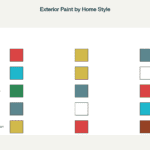Essential Questions to Ask Before Hiring a Kitchen Cabinet Painter
Choosing the right kitchen cabinet painter near me can transform your cooking space from dated to dazzling—and ensure the finish lasts for years. Yet beautiful results depend on vetting each contractor carefully. Use the following 700-word roadmap to screen painters like a pro and feel confident in your investment.
1. Confirm Licensing and Insurance
Start with protection:
-
Licensing: Ask for the painter’s state or municipal license number. Verify it online if possible.
-
Insurance: Request proof of both general liability and workers’ compensation coverage. This shields you from financial responsibility should accidents or property damage occur on site.
-
Why it matters: Licensed, insured pros follow local codes, carry proper safety training, and cannot disappear easily if problems arise.
2. Probe Their Cabinet-Specific Experience
Painting cabinets isn’t the same as rolling walls:
-
Project history: “How many kitchen cabinet projects have you completed this year?”
-
Portfolio: Request before-and-after photos or a short video walkthrough of prior jobs. High-resolution images reveal surface prep quality and edge sharpness.
-
Materials familiarity: Different woods, MDF, and laminates accept paint differently. Confirm the painter knows how to handle your specific cabinet type.
3. Understand Their Preparation Process
Durability starts long before the first brushstroke:
| Prep Step | Why It Matters | What to Listen For |
|---|---|---|
| Degreasing & cleaning | Kitchens collect oils that block adhesion | Solvent cleaners or trisodium phosphate (TSP) |
| Sanding & de-glossing | Roughens surface for primer grip | Use of orbital sanders, proper grits |
| Masking & labeling | Keeps hinges, floors, and counters paint-free | numbered doors, plastic sheeting, tape |
| Priming | Seals wood tannins; prevents peeling | High-bond or stain-blocking primers |
If a contractor minimizes prep, expect premature chipping.
4. Ask About Paint, Primer, and Equipment
Top-tier materials equal a factory-smooth finish:
-
Paint type: Enamel, conversion varnish, or catalyzed lacquer cures harder than wall latex.
-
Sheen selection: Satin or semi-gloss hides fingerprints yet wipes clean.
-
Low-VOC options: Important for indoor air quality—especially in occupied homes.
-
Spray vs. brush/roll: Airless or HVLP spraying delivers uniform coverage but demands impeccable masking. Clarify which method they’ll use on doors versus frames.
5. Clarify Warranties and Guarantees
Reputable painters stand behind their work:
-
Written warranty: Typical coverage spans 1–3 years against peeling, blistering, or workmanship flaws.
-
Exclusions: Understand what voids the warranty (e.g., water leaks, abrasive cleaners).
-
Service calls: Ask how touch-ups are scheduled and whether trip charges apply.
6. Request References and Third-Party Reviews
Social proof saves regrets:
-
Direct references: Speak with at least two recent clients. Ask about punctuality, cleanliness, and communication.
-
Online reputation: Check Google, Yelp, or Houzz for patterns—consistent praise or recurring complaints reveal reliability.
-
Professional affiliations: Membership in groups like the Painting Contractors Association (PCA) signals commitment to industry standards.
7. Nail Down Timeline and Pricing
Avoid sticker shock:
-
Detailed estimate: Line-item breakdown for labor, materials, surface repairs, and number of coats.
-
Start and completion dates: Include buffer days for drying or unforeseen issues.
-
Payment terms: Standard schedules are 10–30% deposit, progress payments, and balance upon walkthrough—not 100% upfront.
-
Red flags: Quotes far below market average may indicate shortcuts on prep or materials.
8. Discuss Cleanup and Site Protection
A professional leaves zero mess:
-
Daily tidying: Tools stowed, drop cloths folded, floors swept.
-
Dust control: Plastic containment walls and HEPA vacuums minimize household disruption.
-
Disposal: Empty cans, masking tape, and plastic sheeting hauled away, not left at curbside.
9. Verify Who Will Do the Work
Know who’s in your kitchen:
-
Crew composition: “Will you personally lead the job or delegate to employees?”
-
Subcontractors: If outsourced, ask for their licensing, insurance, and experience—a reputable primary painter vets subs thoroughly.
-
Point of contact: One supervisor should handle questions and daily updates.
Final Checklist Before Signing
-
License and insurance verified.
-
Cabinet-specific portfolio reviewed.
-
Prep steps documented in writing.
-
Premium, low-VOC paints specified.
-
Warranty terms understood.
-
References contacted; reviews checked.
-
Itemized quote and clear timeline received.
-
Cleanup responsibilities confirmed.
-
Work crew identities established.
Investing time in these questions ensures the kitchen cabinet painter near me you choose will honor craftsmanship, respect your home, and deliver a finish that withstands cooking heat, steam, and daily wear. A carefully vetted pro not only beautifies your cabinets but also protects your renovation budget—so you can enjoy a refreshed kitchen with complete peace of mind.



